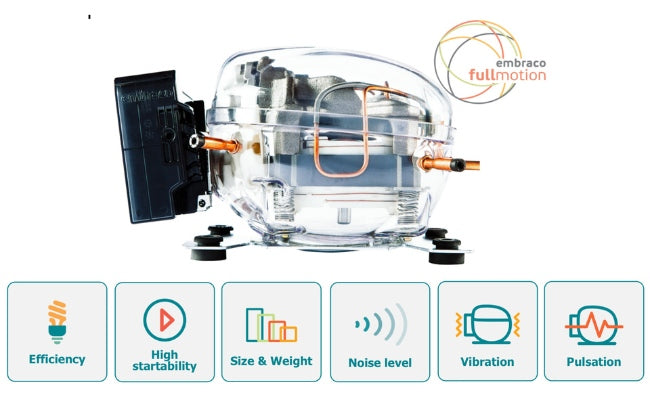
Steak Dry Ager Fridge Maintenance Tips for Best Results
There’s something magical about biting into a steak that’s been dry-aged to perfection, a depth of flavor, tenderness, and character you just can’t get from supermarket beef. If you’re lucky enough to own a dry-ager fridge, you already know you’re holding the secret to steakhouse-level results at home. But just like a prized sports car or a high-end espresso machine, your dry ager only rewards you if you treat it with the care it deserves.
Meticulously aged steak is the product of time, patience, and an environment that’s spotlessly controlled, down to the last detail. That’s where so many home cooks and even restaurants trip up: maintenance doesn’t sound glamorous, but it makes all the difference.
Ready to take your steaks (and your investment) to the next level? This is your complete guide to making dry ager maintenance simple, sustainable, and second nature.
Why Maintenance Isn’t Optional (and Why It Pays Off)
Let’s start with the “why”, because understanding what’s at stake makes those routine tasks worthwhile.
A dry aging fridge is more than a glass box with a few dials. Inside, you’re balancing temperature, humidity, airflow, and time, four factors that influence how meat ages, what flavors develop, and whether the experience stays safe and delicious.
Neglecting maintenance isn’t just risky; it’s expensive. Imagine discovering that contaminated air or mold has ruined your prized ribeye roast after four weeks of waiting! Small oversights can lead to major losses, of flavor, meat, and your fridge’s lifespan. On the other hand, regular care brings countless benefits:
-
Flawless Steak: Consistent flavors and melt-in-your-mouth texture, batch after batch.
-
Food Safety: Protects you and your loved ones from harmful bacteria and spoilage.
-
Longer Equipment Life: Avoids costly breakdowns, keeps parts running, and saves money.
-
Peace of Mind: Enjoy steak nights with total confidence.
Think of maintenance as steak insurance: a little effort now, big payoffs later.
Getting To Know Your Dry Ager: Read, Explore, Understand
Every brand and model of dry ager comes with its own special features and quirks. The first secret to smooth maintenance is understanding your fridge, not just “dry agers” in general.
Grab that manual! Even if yours has been hiding in a drawer since unboxing, the time you spend reading it will save hours troubleshooting later. Important things to look for include:
-
Model-specific parts: Some have detachable racks; others have fixed shelves.
-
Controls: Where do you check temperature and humidity? Digital panel or manual readout?
-
Extra technology: Features like UV sterilization, activated carbon air filters, built-in humidifiers, and automatic drainage are all becoming more common.
What if you lost your manual? Most manufacturers have digital copies online, just search your fridge’s make and model. Some brands even have helpful videos. Pro-Tip: Jot down a “maintenance cheat sheet” for your fridge and stick it nearby. This could include filter change intervals, cleaning product suggestions, and breakdown troubleshooting.
The Daily Ritual: Keep It Simple, Keep It Safe
You don’t need to give your dry ager a spa treatment every morning, but a quick, mindful check-in keeps your meat and machine in top form. Think of it as your steak-loving equivalent to brushing your teeth: fast, automatic, and critical for long-term results.
Here’s a daily dry ager check-in that takes just two minutes:
1. Peek and Sniff
Crack the door and take a quick look (and smell) around:
-
Is the meat developing a natural, nutty aroma, or something sour, musty, or “off”?
-
Do you see any unexpected mold colors (black, green, fuzzy blue)? White mold growth on beef is normal; see anything else, take action.
2. Monitor Temperature and Humidity
-
Glance at your display. Is the temp steady between 34–38°F (1–3°C)? Humidity should hover between 75–85%.
-
If your fridge doesn’t have a clear display, use a cheap wireless thermometer/hygrometer probe. (These are widely available and help even pros sleep better at night.)
3. Wipe High-Touch Areas
-
Door handles, seals, and control panels pick up bacteria and moisture. Give a quick swipe with a clean, slightly damp cloth.
4. Check for Condensation or Leaks
-
Look at the door gaskets and base. Any water collecting? Any drips or weird dampness?
-
Nip leaks in the bud. Water buildup can create a playground for bacteria and unwanted mold.
This quick ritual is your first line of defense against unpleasant surprises.
Weekly Care: Routine Adds Up
Weekly maintenance is the backbone of flavor and longevity. It doesn’t take long but goes a huge way toward ensuring your investment pays you back in delicious, safe steak for years.
Consider making this a standing appointment: “Steak Sunday” or a mid-week fridge check-in you never miss.
Your weekly task list:
Rack and Shelf TLC
-
Remove all racks and shelving you can.
-
Wash thoroughly using warm, soapy water (a few drops of unscented dish soap is perfect).
-
Rinse well, dry completely, and return to the fridge.
Clean the Drain and Tray
-
Pour a small kettle’s worth of hot water (not boiling) down the drain if your fridge has one. This helps prevent blockages and removes bacteria traps.
-
Don’t forget the condensation tray! Empty and wash it, leftovers here turn stinky quickly.
Change or Inspect Filters
-
Most dry agers use activated carbon or HEPA filters to neutralize bacteria and airborne aromas.
-
Set a calendar reminder to replace these every 1–3 months, per your manual’s suggestion.
-
Some models have UV-C lights for sanitizing. Double check they’re functioning (most give a clear indicator light).
Bonus tip: If you discover stubborn grime or limescale on racks or trays, soak in a mild vinegar-water solution for 20–30 minutes before scrubbing gently.
Monthly Deep Cleaning: The Flavors of a Fresh Start
This is where you show your fridge (and your steaks) how much you care: a monthly deep clean. This is also the perfect time, after finishing a batch, to prepare for your next cycle.
Set aside 30–45 minutes for a thorough clean:
1. Empty and Unplug
-
Move any dry-aging beef to another cold storage or process it for meal prep.
-
Unplug the fridge, this makes it safe and resets your sense of “interior climate.”
2. Disassemble Everything Removable
-
Remove racks, rails, hangers, trays, and any detachable bins.
-
Take inventory: Are any parts cracked, warped, or worn? Replace them before the next batch.
3. Sanitize Properly
-
Wipe all surfaces inside the fridge with a food-safe sanitizing cleaner or a 1:2 mix of white vinegar and water.
-
Hit corners, gaskets, and around fans. These overlooked spots are prime real estate for bacteria.
-
For persistent mold stains, an isopropyl alcohol spray (70% or higher) is effective and safe for most interiors.
4. Dry and Air Out
-
Leave the door propped open for an hour to air dry. This helps prevent the buildup of lingering moisture, which can breed “bad” molds.
5. Check Filters and Lights
-
Swap out air filters as needed.
-
Confirm your UV-C bulb (if included) is still operational, replace according to manufacturer direction (most bulbs last 6–12 months before losing efficiency).
Never use bleach or abrasive cleaners that aren’t food-safe, bleach can linger and taint your next steak!
Troubleshooting: When Things Go Wrong
1. Temperature/Humidity Swings
-
Inspect the door seal for cracks, food debris, or warping.
-
Are the condenser coils clean (dust can cause temp swings)? Wipe gently with a brush or soft vacuum once a month.
2. Persistent Bad Odors
-
Odors that linger after cleaning may be caused by small spills in hard-to-reach places, or a dead filter.
-
Rinse the entire interior, paying close attention to drains and beneath the racks.
-
Replace the filter, even if it was changed recently (sometimes defective filters are the cause).
3. Mold Outbreak
-
Discard all meat immediately if blue, green, or black mold appears.
-
Do a full deep clean with vinegar or an alcohol solution.
-
Air dry and replace filters before using the fridge again.
4. Mechanical Issues
-
If your fridge makes clanking, whirring, or buzzing sounds it never has before, contact a professional. Most issues can be resolved before they impact aging if caught early.
Secrets of the Pros: Take Your Maintenance Next Level
-
Install a backup humidity/temperature monitor: Small wireless monitors will notify your phone if things drift out of range, protecting hundreds of dollars’ worth of steak!
-
Keep a simple maintenance log: Jot down dates for filter changes, deep cleans, aging batch starts and finishes. It’ll help you spot trends (and prevent skipped steps).
-
Don’t rush repopulating: After every deep clean, let your fridge run for a few hours at the target settings before loading in new beef. This “settling” period ensures ideal aging conditions from the very start.
-
Season your fridge occasionally: Some steak aficionados run a short initial cycle (with less expensive cuts) to “seed” the fridge with beneficial flora before loading up with prized prime rib.
-
Vacuum under and behind your fridge: Dust and crumbs attract pests and can lead to cooling inefficiency.
Scheduling: The Low-Stress Approach
For many steak lovers, the biggest maintenance challenge is just remembering to do it! Try these scheduling tricks:
-
Put a recurring reminder in your phone for weekly and monthly tasks.
-
Use a dry-erase board on your fridge to check off cleaning and filter changes.
-
If you age beef regularly, pair the start/end of a batch with cleaning. For example, clean right before you reload with a new ribeye or sirloin.
This way, cleaning becomes a natural part of your steak ritual, not a dreaded chore.
It’s About Respecting the Process
At its core, dry aging is as much a tradition as a science, a ritual that marries nature, technology, and the cook’s own labor of love. You nurture your beef for weeks, watching it transform from an ordinary roast into a culinary masterpiece.
Treating your equipment with the same care you give your ingredients is a celebration of that process. It’s not just about preventing disasters; it’s about elevating every aspect of your steak journey, from the first sizzle to the final, unforgettable bite.








